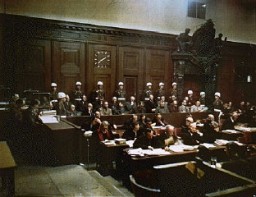You searched for: 股权直销公排商城快速搭建【TG���������@EK7676】平台包网搭建股权直销公排商城快速搭建【TG���������@EK7676】平台包网搭建3SgZtqEwVd
<< Previous | Displaying results 26-50 of 274 for "股权直销公排商城快速搭建【TG���������@EK7676】平台包网搭建股权直销公排商城快速搭建【TG���������@EK7676】平台包网搭建3SgZtqEwVd" | Next >>
-
The Murder of People with Disabilities
ArticleAt the beginning of WWII, people with mental or physical disabilities were targeted for murder in what the Nazis called the T-4, or "euthanasia," program.
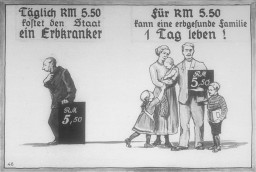
-
The Boycott of Jewish Businesses
Media EssayOn April 1, 1933—less than 3 months after rising to power—the Nazis staged a nationwide boycott of Jewish businesses. The boycott signaled the start of the Nazi movement to exclude Jews from all aspects of German soci...
-
New York Times article
ArtifactA March 3, 1967, New York Times article about Simon Wiesenthal entitled, "Relentless Nazi-Hunter."
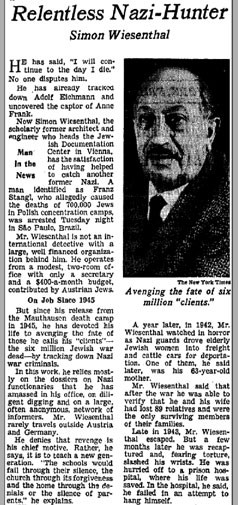
-
We Will Never Die, program cover, 1943
ArtifactThe program cover for "We Will Never Die" featured Arthur Szyk’s "Tears of Rage" artwork. The cover's original dimensions are: 12 1/16" x 9 1/16" x 3/16.
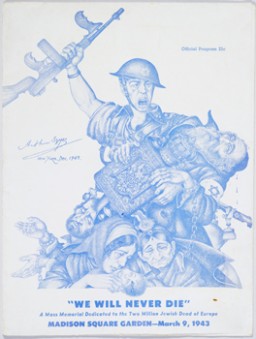
-
A notice announcing a meeting about boycotting the Olympics
PhotoA pedestrian reads a notice announcing an upcoming public meeting, scheduled for Tuesday, December 3, to urge Americans to boycott the upcoming 1936 Berlin Olympics. New York, United States, 1935.

-
Jesse Owens and other Olympic athletes compete
PhotoAmerican Olympic runner Jesse Owens and other Olympic athletes compete in the twelfth heat of the first trial of the 100m dash. Berlin, Germany, August 3, 1936.
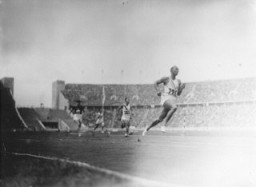
-
Passport stamped with "J" for "Jude"
PhotoPassport issued to Lore Oppenheimer, a German Jew, with "J" for "Jude" stamped on the card. "Sara" was added to the names of all German Jewish women. Hildesheim, Germany, July 3, 1939.
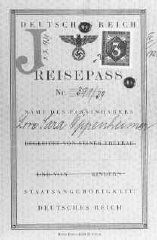
-
German troops march into the town square of Friedland
PhotoIn the aftermath of the Munich agreement, which turned the Sudetenland area of Czechoslovakia over to Germany, German troops march into the town square of Friedland. October 3, 1938.
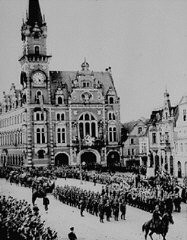
-
A Norwegian town burns after a German bombing mission
PhotoThe Norwegian town of Elverum, near the Swedish border, burns after a German bombing mission during the invasion of Norway. Elverum, Norway, May 3, 1940.
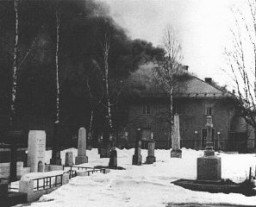
-
Building damaged following the German invasion of Norway
PhotoThis building in the town of Elverum, near Oslo, was damaged during a bombing raid following the German invasion of Norway. Elverum, Norway, May 3, 1940.
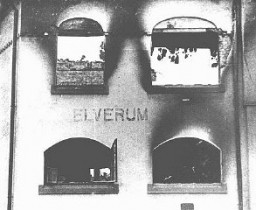
-
Arriving in New York
PhotoA group of German and Austrian Jewish refugee children arrives in New York on board the SS President Harding. New York, United States, June 3, 1939.

-
Hitler tours the Sudetenland
PhotoHitler during a triumphal tour of the Sudetenland following the Munich agreement of September 1938. The agreement ceded the largely German-speaking Sudeten region of Czechoslovakia to Germany. Eger, Czechoslovakia, October 3, 1938.
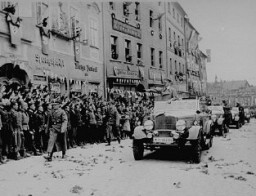
-
Group portrait of former Bielski partisans
PhotoGroup portrait of former Bielski partisans from Nowogrodek taken in the Foehrenwald displaced persons camp. Germany, April 3, 1948.
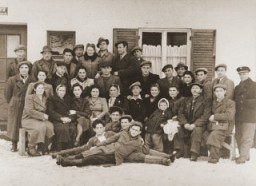
-
Refugees aboard the St. Louis
PhotoRefugees aboard the St. Louis wait to hear whether Cuba will grant them entry. Off the coast of Havana, Cuba, June 3, 1939.
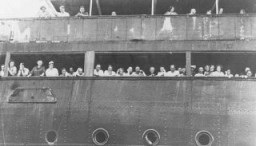
-
German women at work in the offices of the German Census Bureau
PhotoGerman women at work in the offices of the German Census Bureau. The board gives directions for tabulation: the center column instructs that number 3 is the indicator to be used for Jews. Germany, 1933.
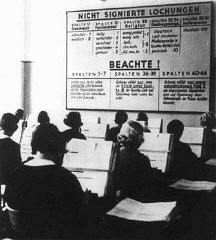
-
Aerial photograph showing gas chambers and crematoria at Auschwitz-Birkenau
PhotoAerial photograph showing the gas chambers and crematoria 2 and 3 at the Auschwitz-Birkenau (Auschwitz II) killing center. Auschwitz, Poland, August 25, 1944.

-
The defendants in the dock during the Justice Case
PhotoThe defendants in the dock during the Justice Case, Case #3 of the Subsequent Nuremberg Proceedings. Nuremberg, Germany, 1947.
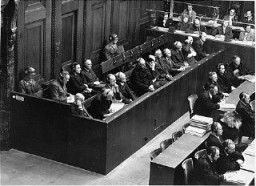
-
Regina upon her high school graduation
PhotoRegina upon graduation from Thomas Jefferson High School in Brooklyn, New York, February 3, 1949.
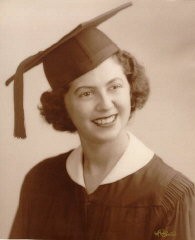
-
Regina and Victor Gelb celebrate their 50th wedding anniversary
PhotoRegina and Victor celebrate their 50th wedding anniversary. New York City, May 3, 2003.
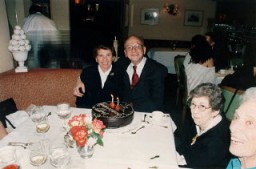
-
Lublin/Majdanek Concentration Camp: Conditions
ArticleIn 1940, the Nazis established Lublin (Majdanek) concentration camp in Lublin, Poland. Learn more about camp conditions.
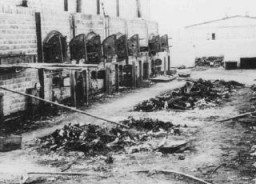
-
Advertisement for the Violetta women's club
DocumentA newspaper advertisement for the Damenklub Violetta, a Berlin club frequented by lesbians, 1928. Before the Nazis came to power in 1933, lesbian communities and networks flourished in Germany.
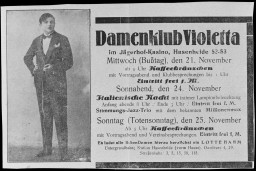
-
Lublin/Majdanek: Key Dates
ArticleExplore a timeline of key events in the history of the Lublin/Majdanek camp in German-occupied Poland.
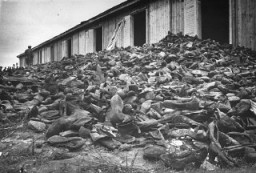
-
Reichstag Fire Decree
ArticleThe Reichstag Fire Decree of February 1933 restricted individual freedoms, and allowed Hitler's government to overrule state and local laws and overthrow state and local governments.
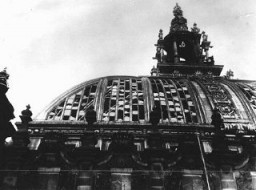
-
Decree against Public Enemies
ArticleThe Decree against Public Enemies was a key step in the process by which the Nazi leadership moved Germany from a democracy to a dictatorship.
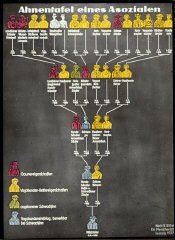
-
Nuremberg Trials
ArticleTrials of top surviving German leaders for Nazi Germany’s crimes began in Nuremberg after World War II. Read about the Nuremberg trials.
